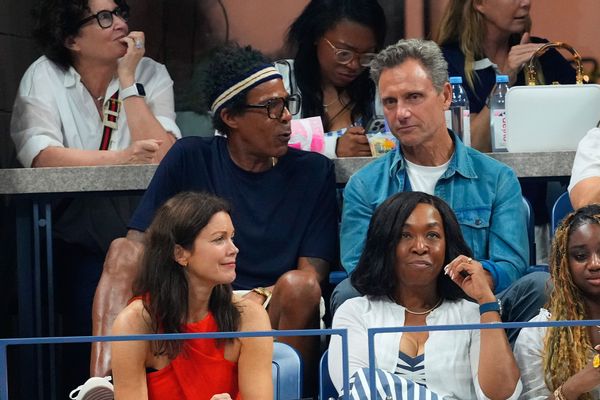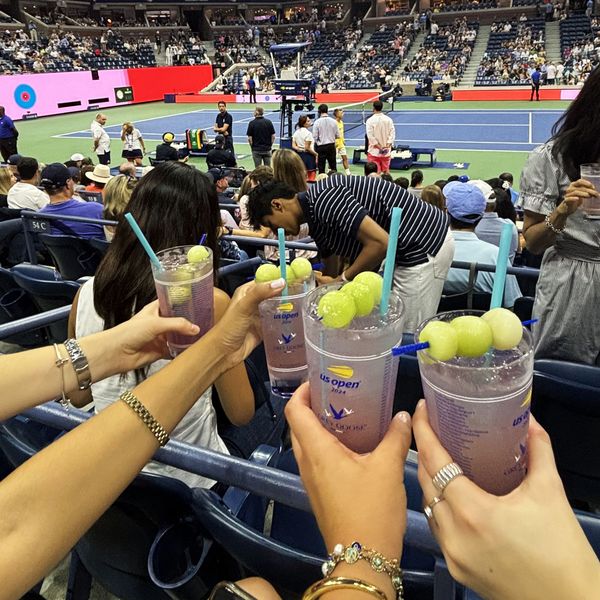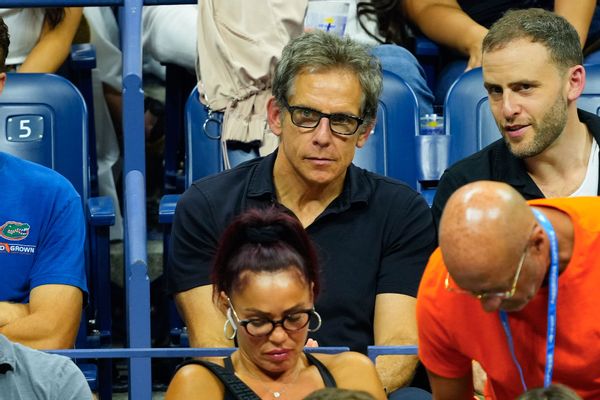
When a good friend reached out to ask if I’d like to attend the U.S. Open with her (in courtside seats sponsored by her investment firm employer, no less) I jumped at the opportunity. The Grand Slam tournament — set amid the summer’s final feverish days — had long been on my bucket list as a New Yorker.
As a lifelong runner and intermittent tennis player, one might assume my response to my friend would be related to the world-class athletes we’d get to see play. Instead, I smirked in amusement when, after replying with an enthusiastic “YESSSS” to my friend’s text, we each sent variations of the same messages simultaneously, neither of which were about tennis.
“We need to plan our fits.”
“We can dress so cute.”
“And get the honey deuce.”
Call it womanhood, call it brat summer, but I have a hunch that our instinctive, knee-jerk responses to the news that we’d be attending the U.S. Open together speak to a larger cultural phenomenon. That is, at least for some of the tens of thousands of Open-goers who have flocked to Flushing Meadows Corona Park since the event kicked off late last month.
“It’s like Black Friday at Walmart,” Long Islander Sally Neal told the New York Times of the crowds this year, the most in the tournament’s 142-year history.
So why are so many people attending the U.S. Open? It depends on who you ask.
When it comes to tennis, there’s no denying the U.S. Open’s historical relevance and influence. While not as old or perhaps as prestigious as Wimbledon, which is held annually in London, the U.S. Open is an athletic juggernaut in its own right. Household names like the legendary Serena Williams and John McEnroe are among those who have earned the title of most championships won at the tournament. At last year’s U.S. Open, fledgling phenom Coco Guaff’s singles victory marked the most-viewed women's major tennis final ever on ESPN.
Vinkan Cinaroglu, a 30-something from San Antonio, Texas, told Salon he’d flown to New York to celebrate his birthday and attend the U.S. Open with family. Cinaroglu, an ardent tennis fan, felt confident that more people were present at the event for the game itself than for the social atmosphere. “If you wanna go to the atmosphere, you go to the f**king club, right?” he added, noting how he’d paid a visit to The Box and Little Sister, two nightclubs in downtown Manhattan.
I was introduced to Scott, a 37-year-old IT worker from Washington, D.C., after he tapped me on the shoulder from across the aisle to politely inform me that my lip gloss had fallen out of my purse.
“I’m here for tennis,” Scott affirmed before I’d even finished asking my question. He had taken the train from D.C. to see Novak Djokovic, the defending U.S. Open champion who is the same age as Scott. The Serb was surprisingly knocked out of the tournament early, in the third round of play.

Rose, 35, an attorney sitting in corporate seats, said she also felt the pandemic had to do with why some fans were more invested in attending the U.S. Open this year than they might have been in the past. “After COVID, you appreciate these things a lot more, at least for me,” she said.
And yet, while the opportunity to watch really good tennis remains the true linchpin of the U.S. Open’s relevance, its undeniable social-calendar appeal cannot be discounted.
“It’s the event of the season,” said Asatta Mesa, a 25-year-old Strategy Associate at JP Morgan told me. “It’s a great social experience with friends. Frankly, I did not learn much about tennis. I learned that this stadium existed in Queens.” Mesa, who was attending her second night of the Open, noted how much of the chatter she’d overheard on her first evening of attendance — in a relatively higher section — had demonstrated an obvious dearth of tennis knowledge.
“There [were] lots of questions being asked about who was playing, which indicated to me that people didn’t come for the players themselves,” she said.

Leading the charge for why some people might come is the event’s signature Honey Deuce cocktail. Served in a souvenir highball cup, the $23 dollar drink melds Grey Goose vodka with lemonade and a splash of Chambord raspberry liqueur and is garnished with a trio of melon balls meant to resemble tennis balls. The Honey Deuce, which is set to hit $10 million in sales, is practically synonymous with the tournament, having become a cultural phenomenon in its own right since it was first introduced in 2007. “It’s become one of the more Instagram-worthy cocktails,” mixologist and Honey Deuce creator Nick Mautone told The Athletic.
For Mesa, however, social media didn’t factor heavily into her decision to buy a ticket. “I don’t know that I’m here for the ‘Gram,” Mesa said. “Just more because it’s something one does in New York City.”
And it’s true — after making our way through the dawdling crowds outside Arthur Ashe Stadium, clutching our Deuces tightly to our chests, the first thing we did after sitting down was take a photo of our drinks in front of the court. “It’s not only just a drink, it’s part of the aura,” Oscar Peña, the lead supervisor of a Grey Goose Bar stand in the USTA Billie Jean King National Tennis Center said to The Athletic. “When you think of the U.S. Open, you automatically think Honey Deuce right after that.”
Then there are the off-court names. In recent years, it feels as though the U.S. Open has become an end-of-summer opportunity for celebrities, influencers and upper-echelon New Yorkers to congregate to be, well, seen. This year’s tournament drew stars like Vogue editor-in-chief Anna Wintour, sporting her trademark oversized sunglasses, and Paris Olympians Simone Biles and Katie Ledecky, freshly minted gold medalists in their respective sports. Ben Stiller was only a few rows in front of me, tossing fans intermittent “Blue Steels” and pausing for selfies whenever he got up to use the bathroom. And the U.S. Open’s Opening Night Gala — a yearly event supporting the U.S.T.A’s charitable efforts — saw songwriter Lin Manuel-Miranda in attendance and Alec Baldwin helm an auction block. As ballet dancer Misty Copeland honestly admitted to the New York Times, she had not read up on tennis ahead of attending her first U.S. Open this year. She had, however, watched “Challengers.”
“I’m excited to just experience it all for the first time,” Copeland said.

Copeland and I were simpatico in that regard. Part of that excitement was rooted in my desire to see some of the Open’s storied glitz and glam; however, I was surprised to see that most of the crowd — even in the pricey seats where I was — had opted for relatively unremarkable attire. While many of the spectators sported incredible hair styles, smelled like department stores and wore Cartier bracelets and Italian leather loafers, I had expected significantly more ostentatious energy than I actually witnessed. I suppose this is what distinguishes the U.S. Open from other premier events that amalgamate sports with socializing, like the Kentucky Derby. From my courtside vantage point, it hardly felt like people were trying to draw attention to themselves, subverting my initial assumptions.
Though the U.S. Open’s crowd was clearly bifurcated into tennis devotees and society seekers, relatively everyone was on the same page when it came to engagement. As the match between the U.S.’s Frances Tiafoe and Aussie Alexei Popyrin crept into its closing rounds, the crowd was locked in, each rally eliciting “oohs” and “aahs” that uncannily mirrored the sound effects spliced into Wii Sports’ virtual tennis. When a few overzealous fans couldn’t contain their excitement, and yelled “C’mon, 'Foe!” just as the American was readying to lob the ball upward in a serve, hundreds of other fans collectively shushed them. It was a clear show of respect, not only for the players but for the broader experience shared by all those gathered in the stadium.
“I’d say it’s maybe 70-30,” Scott said, regarding the audience’s split. “Like, maybe 70% aren’t the biggest tennis fans. I don’t think it’s a bad vibe or anything. I mean, people are here to have fun. I think that’s what it’s all about anyway.”







